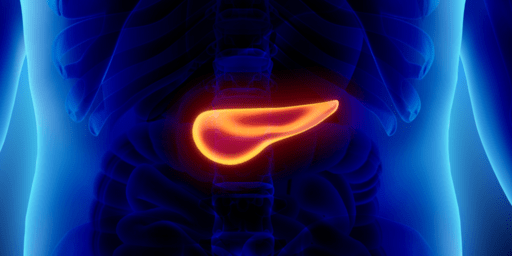Intraductal Papillary Mucinous Neoplasm (IPMN)

Pancreas
Intraductal Papillary Mucinous Neoplasm of Pancreas is a tumor that arises in the pancreatic ducts. The secretion of thick fluid called mucin characterizes them.
In IPMN, the lining of the pancreatic duct changes to mucin producing neoplastic cells, which results in dilatation of the pancreatic duct. These tumours more commonly occur in older individuals and in the head of the pancreas. These tumor types are more frequently diagnosed in men.
Pathologically, IPMNs are classified into two broad groups:
- Those that are associated with invasive cancer
- Those that are not associated with invasive cancer
Those without an associated invasive cancer can be further sub-categorized into two groups.
- IPMN with low-grade dysplasia
- IPMN with high-grade dysplasia
Dysplasia refers to abnormal growth that results in loss of normal cell and tissue organization.
Signs and symptoms of IPMN
Majority of these tumours are small and do not announce themselves by causing symptoms. They are detected when ultrasound, CT or MRI is done to investigate unrelated symptoms. With advances in diagnostics, imaging and their frequent use, more and more such pancreatic lesions are being discovered.
The following are some signs and symptoms associated with IPMN of pancreas:
- Abdominal pain
- Nausea and vomiting
- Jaundice
- Anorexia (loss of appetite)
- Weight Loss
- Acute pancreatitis
- Feeling of fullness after food or bloating
- Lump in the abdomen
Diagnosis and Investigations
The commonly done investigations are
- Computed tomography (CT)
- Magnetic resonance imaging (MRI)
- Endoscopic ultrasound (EUS)
- Blood markers
Computed tomography (CT) is a diagnostic procedure in which the patient is scanned with a beam of x-rays. The resulting signals are computer-processed, generating slices of the image of inside. For better characterization, intravenous contrast is administered and images are acquired in various phases of the passage of contrast through the pancreas, blood vessels and tumour (dual/triple phase).
Magnetic resonance imaging (MRI) is a modality in which strong magnetic fields, radio waves and the computer are used to generate images of the inside of your abdomen.
Endoscopic ultrasound (EUS) is like doing an ultrasound of pancreas from inside of your stomach or duodenum with a special endoscope. Besides, tissue or fluid can be aspirated from the lesion, a procedure called fine needle aspiration cytology (FNAC). It is examined under a microscope for the type of cells and various tests can be run on the fluid to find out the type of lesion.
Main duct and branch duct IPMN
IPMNs form in the main pancreatic duct or in one of the branches off of the main pancreatic duct.
- IPMNs that arise in the main pancreatic duct are called "main duct type" IPMNs
- IPMNs that arise in one of the branches of the main duct are called "branch duct type" IPMNs
Main duct type IPMN
Chances of invasive cancer are more in main duct type IPMN. hence they should be surgically resected if the patient is fit. IPMNs in the tail of the pancreas are usually resected using a procedure called a distal pancreatectomy. IPMNs in the head of the pancreas are usually resected using a Whipple procedure (pancreaticoduodenectomy). A total pancreatectomy (removal of the entire gland) may be indicated in the rare instances in which the intraductal papillary mucinous neoplasm involves the entire length of the pancreas.
Branch duct type IPMN
We can observe asymptomatic and small side branch IPMN with features not suggestive of cancer with regular radiological follow-up.
The international guidelines suggest that asymptomatic patients with a branch duct IPMN that a) is less than 3 cm in size, b) not associated with dilatation (ballooning) of the main pancreatic duct, and c) does not contain a solid mass (mural nodule), can be followed safely without surgery.
The guidelines recommend surgical resection of branch duct type IPMNs that cause symptoms that are larger than 3 cm, that contain a mass (mural nodule), OR which are associated with significant dilatation of the main pancreatic duct.
Stay Alert! Stay Healthy!
Wish you a speedy recovery!


